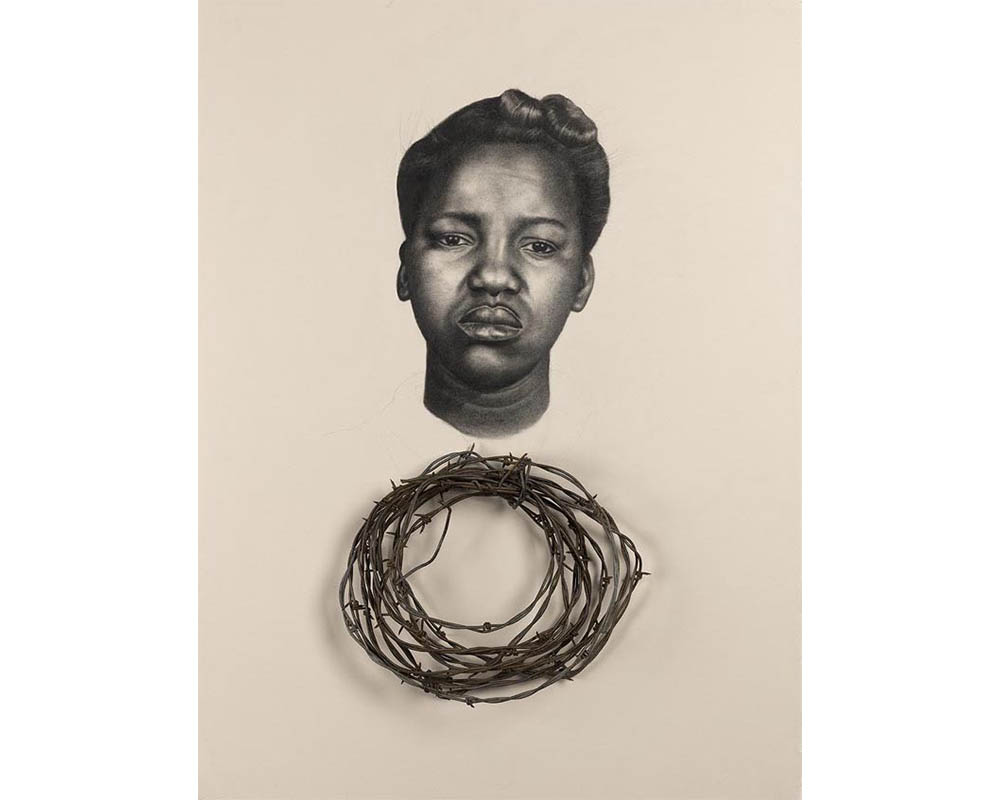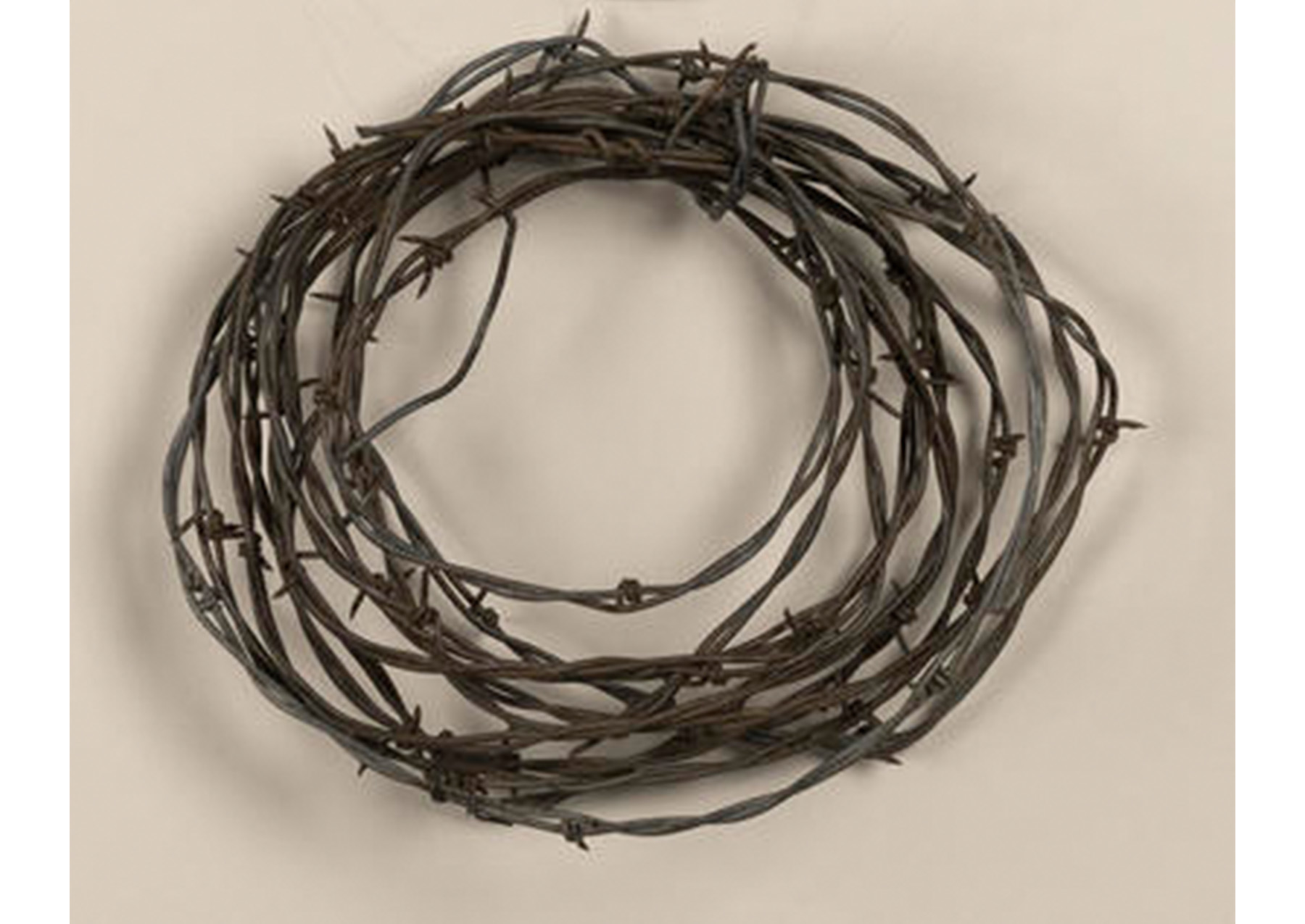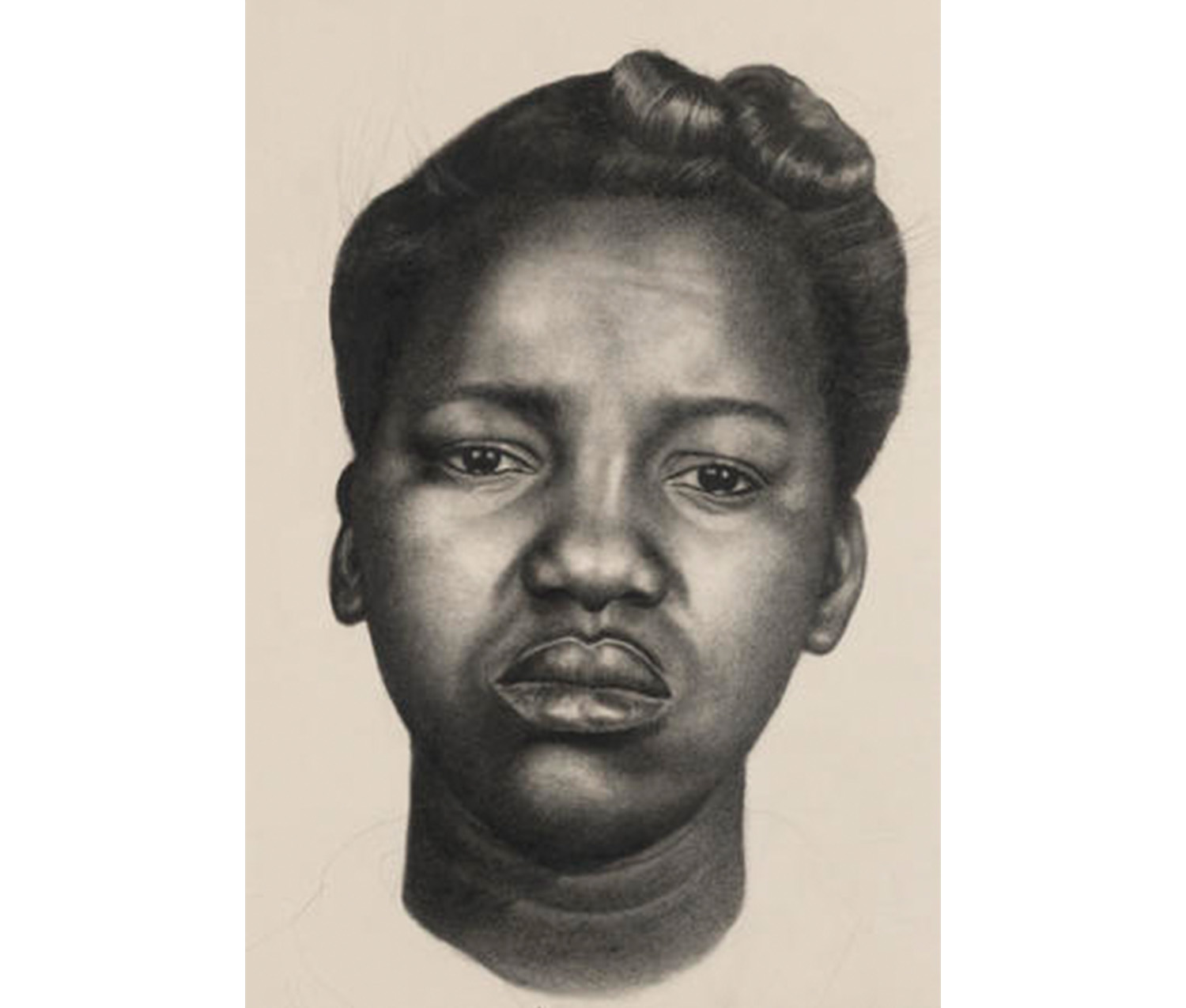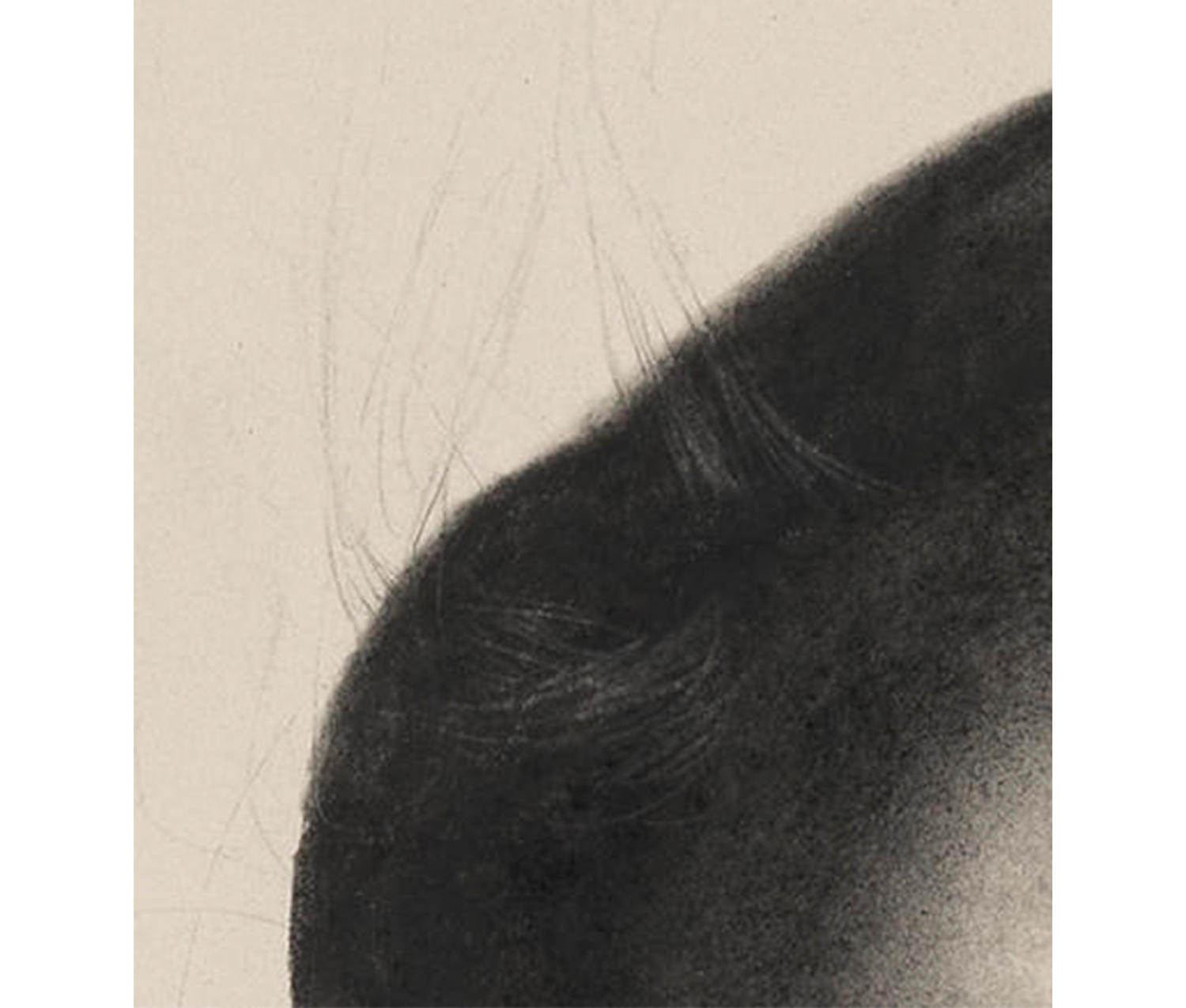
Kin
Maggie Kurkoski is a member of the Smith College class of 2012 and the Brown Post-Baccalaureate Curatorial Fellow in the Cunningham Center.
Seeing Kin XXXII (Run Like the Wind) in person is so different than seeing it as an image on a computer. I wish I could take you into the Cunningham Center and show you this drawing right now. Since the work is three-dimensional, Lovell encased the entire piece in a black box frame; it takes up a lot of space, projecting out from the wall. When you look at it directly, you’re really looking into a box, and it takes up all your peripheral vision. There’s a sense of being absorbed, or surrounded.

Shadow suddenly plays a major role when you look at Kin XXXII (Run Like the Wind) in person, too. Not only does the box frame create its own shadow on the wall, increasing its physical presence, but it casts a shadow on the drawing of the woman’s face. Likewise, the barbed wire has its own shadow, making it seem larger than it is. On some level, the work changes at every location, based on the lighting in every different gallery.

Detail from Kin XXXII (Run Like the Wind)
There are subtle details that are difficult to make out on a computer screen as well. When you look closely, you can see the light impression of a shirt color, fading into the blank background. Lovell has drawn delicate, light flyaway hairs emerging from the woman’s tightly coiffed hair. These small, meticulous additions speak to Lovell’s incredible skill and attention to detail.

Detail from Kin XXXII (Run Like the Wind)

Detail from Kin XXXII (Run Like the Wind)
The barbed wire is rusted and old. Lovell doesn’t shy away from loaded symbolism, and so it immediately reminds me of the crown of thorns that biblical tradition says Jesus wore on the cross. Such an association conjures up suffering and sacrifice. In conjunction with her worried expression, the effect is disturbing. Does the barbed wire refer to some earth-shattering event in her life? Is it a reference to her personality somehow? Could it relate to the persistent pain of racism, both historical and present, which she faces as a black woman?
The title, Kin XXXII (Run Like the Wind), only complicates these ideas. Kin implies connection and relationships, even family. As this work is part of a much larger series, it makes me wonder about the connection between each piece. The statement Run Like the Wind could be a command or a description. Typically, barbed wire is used to prevent people from entering or leaving a place, and it contrasts sharply with the freedom that running implies.
Like all of Lovell’s works, this piece provokes more questions than it answers. This ambiguity, coupled with the sheer physicality of the work, creates a piece that sticks in your mind long after you see it.